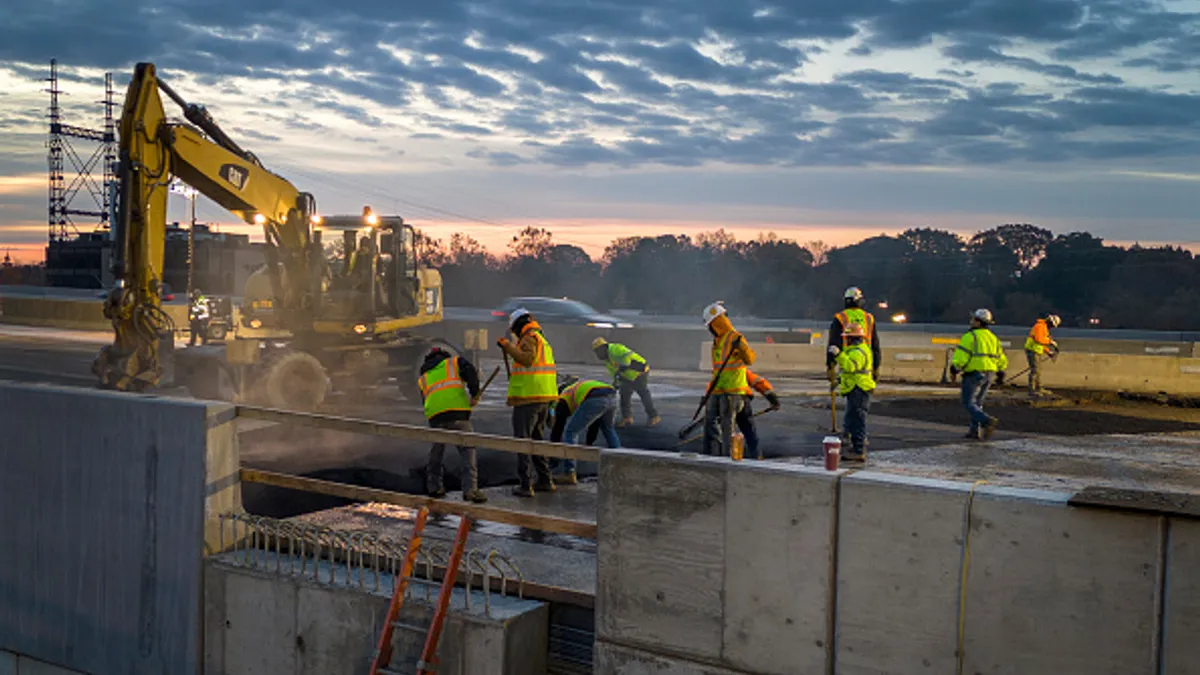Getting paid in the private construction business — whether it involves a particularly evasive general contractor or an owner who’s in a tight financial spot — can be a challenge. Fortunately, no matter the size of their legal budgets, contractors have an alternative to waiting out a check indefinitely, and it’s called a mechanic’s lien.
Mechanic’s liens, usually the collection tool of last resort, protect a contractor’s interests by creating an encumbrance, or monetary claim, on the project property, be it commercial or residential. The lien is public record, and, much like a loan on a vehicle or a mortgage, it must be satisfied — paid — before the owner can provide clear title to a buyer or another lender in case of a refinance. Unlike a home or auto loan, however, mechanic’s liens exist specifically to ensure that those who provide services and materials to a construction project are paid.
Steps to filing a lien
In most states, the right for contractors to file a mechanic’s lien is not automatic, as there are some legal hurdles to jump. Usually within a certain timeframe, contractor must let the owner know in writing that they are providing services to the project, and notice has to be given in a way that can be proven down the road — such as certified mail, overnight delivery or hand delivery with a signed receipt.
If the owner or general contractor makes timely payments throughout the course of a job, then that’s as far into the mechanic’s lien process they will get. If not, then welcome to the next round of paperwork. If the payments stop coming, and a contractor has met the notice requirements, it’s time to consider filing a mechanic’s lien.
If a contractor files a lien, the process still isn’t complete, though. Most states do not allow a mechanic’s lien to just hang out in the public record forever. At some point, the contractor who filed the lien has to pull the trigger and foreclose on the lien, forcing the sale of the property in order to ultimately get paid.
Variations between states
While the mechanic’s lien option is available in every U.S. state, each has its own variations on the process, so we took a general look at the laws in California, Florida and New York.
California
Attorney Mark Johnson, partner at Snell & Wilmer in Los Angeles, said that since the California mechanic’s lien laws underwent an overhaul in 2012, it’s slightly easier for contractors to perfect, or record and enforce, mechanic’s liens.
The mechanic’s lien process in California begins with a preliminary notice, Johnson said. "The preliminary notice attaches from the time you serve the notice," he said, limiting lien rights to work performed after the notice is filed. "Let’s say you’ve worked on a job 100 days (without filing a preliminary notice). You have no rights to a mechanic’s lien for (work performed) the first 100 days, but you do have rights after you serve the notice."
If contractors don’t serve a notice at all, Johnson said, they have no mechanic’s lien rights. A contractor also has no lien rights, he said, if not properly licensed for the trade they are working in.
Johnson said that once a contractor has filed a preliminary notice, "prudent" owners require lien releases be executed with every payment. A lien release is a signed statement from the contractor that it has been paid through a certain date, generally releasing the owner from any payment obligation for work performed before that date.
Nevertheless, even if a contractor meets all of the notice and filing obligations, Johnson said, that doesn’t always mean smooth sailing through the foreclosure process. For example, he said, the most common owner defense to foreclosure is a claim that the contractor’s work was defective in some way. Still, Johnson said, it’s normally the preliminary notice requirements and subsequent filing requirements that prevent a contractor from completing a successful lien action. "The procedural hiccups are the biggest problems that mechanic’s lien claimants have," he said.
Johnson said that while contractors of every size can have issues meeting the statutory lien requirements, smaller contractors who don’t have the internal staff to cover their legal bases are the ones who will most likely miss out on the protections liens can offer.
Florida
Edward C. Lohrer with Becker & Poliakoff, P.A. in Ft. Lauderdale, FL, said the lien laws in Florida are "broad and expansive," but, aside from minor "tweaks" with each legislative session, the process has remained largely the same for many years.
In Florida, Lohrer said there are no significant notice requirements for a contractor in "direct privity" with the owner, meaning that there is a direct contract with the owner. "Your most important deadline," he said, "is you have 90 days from the date you last performed work on the project to record your lien." If the contractor does not record the lien within that window of time, "you lose your lien rights altogether," he added.
If a contractor does not have a direct contract with the owner, such as a subcontractor, he said, the contractor must file a Notice to Owner within 45 days of starting work or lose his lien rights. "Depending on how big the project is," Lohrer said, "there could be dozens of different people doing work, all of them with potential lien rights."
The same 90-day lien recording deadline applies to this tier of contractors as well, and, like most states with preliminary notice requirements, notices must be sent or served in such a way that provides proof the owner received it. "The lien law is strict compliance, and, if you mess up, you lose your lien rights."
New York
In contrast, attorney Andrew Richards of Kaufman Dolowich & Voluck, LLP in New York said the state of New York has no preliminary notice requirements that must be met in order to file a mechanic’s lien.
"You have eight months to file a mechanics lien from the last day you perform labor or supply materials," he said. That generous timeframe shrinks to four months for residential projects. "You also have to serve notice on the owner, commercial or residential," he said, "either five days before filing a lien or within 30 days thereafter."
Once a mechanic’s lien is filed, Richards said, the contractor has one year to foreclose on the lien. However, it can be extended for additional one-year periods before the contractor is required to foreclose. In Florida, that deadline is also a year unless the lien is contested, but California contractors must act to enforce their liens within 90 days.
In the cases of subcontractors who file liens, Richards said, the owner is required to withhold the amount specified in the lien from the general contractor. "If they don’t," he said, "(the owner) could have to pay the sub later on again."
In lieu of the owner withholding payment, Richards said, the general contractor can put up a bond for 110% of the disputed amount.
Risk of ruining a relationship
A major obstacle to contractors availing themselves of their lien rights, however, is not a legal one. Many contractors, experts noted, are hesitant to file a lien and potentially ruin a business relationship.
"I think that there is a lot of hesitation," Lohrer said, "especially if there’s repeat business or there’s a long-term relationship because, of course, you could risk upsetting the owner. At the same time, those deadlines are set in stone, and if you wait longer than the 90 days after you’ve stopped doing work, you lose your lien rights."
Richards said owners will sometimes try to persuade contractors not to file a lien, but Richards said that’s never a good idea for contractors. "They’re a good security. Don’t waive your rights," he said.
Richards added, "If you look the other way, and you just hope for the best, that’s not a very good way to run a business, and chances are that you’re probably going to get burned. In six months or a year down the road, when you’re out tens of thousands of dollars or more on that project, you probably won’t be saying what a good person that guy was."






















